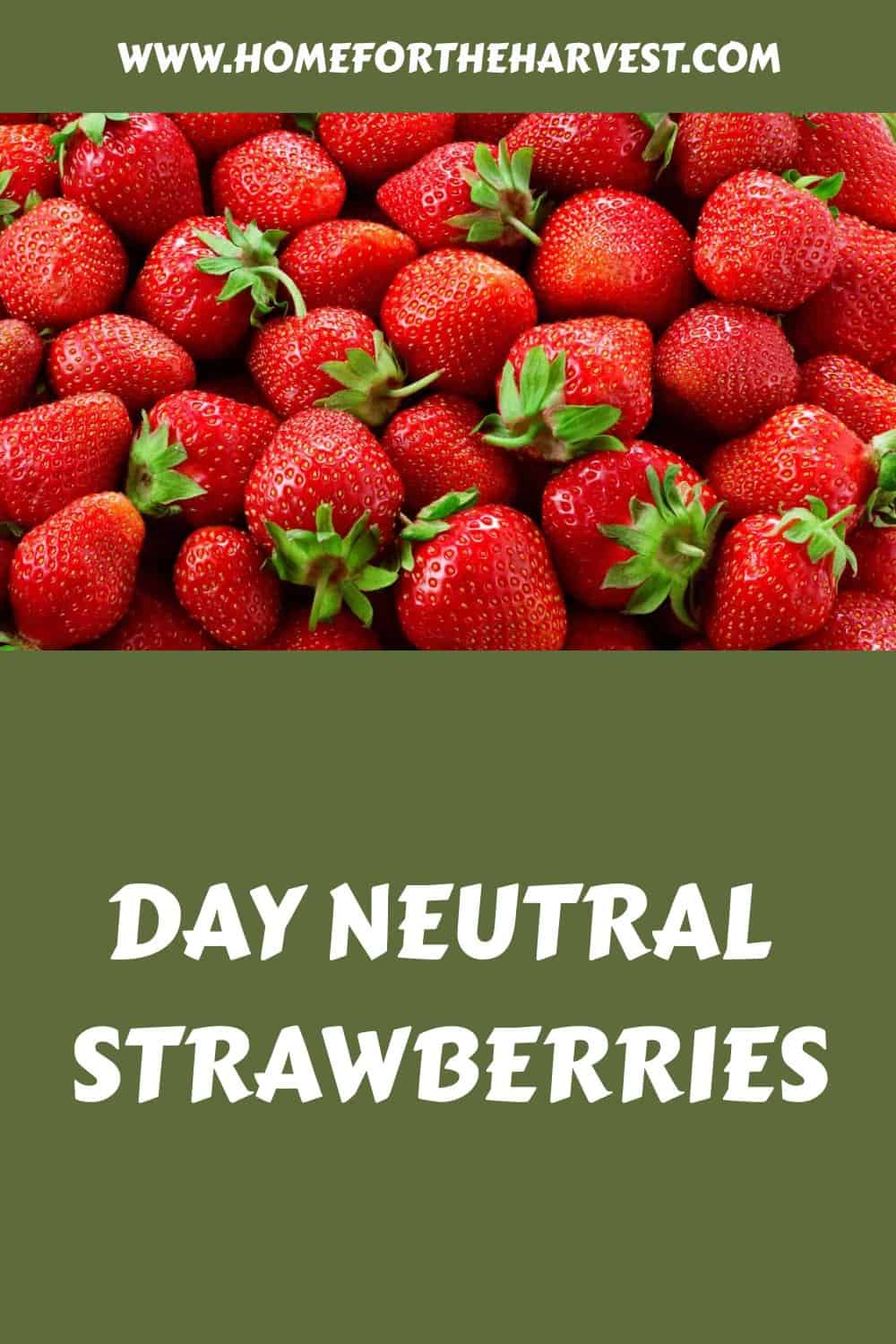Wondering what day-neutral strawberries are?
Day neutral strawberries are a type of strawberry plant that produces fruit throughout the growing season, rather than having a specific fruiting period. These plants are called “day neutral” because their fruiting is not affected by the length of daylight hours in the same way that many other strawberry plants are. Instead, day neutral strawberry plants produce fruit based on other factors, such as the age of the plant and the availability of water and nutrients.
Day neutral strawberries are a popular choice for home gardeners and commercial growers because they can produce a steady supply of fruit over a longer period of time. They act like improved everbearing-type plants, with sweeter berries that have a flavor more similar to top-tasting June-bearing varieties. Some common varieties of day-neutral strawberries include ‘Tribute,’ ‘Tristar,’ and ‘Seascape.’
Read on to learn all about day-neutral strawberries!
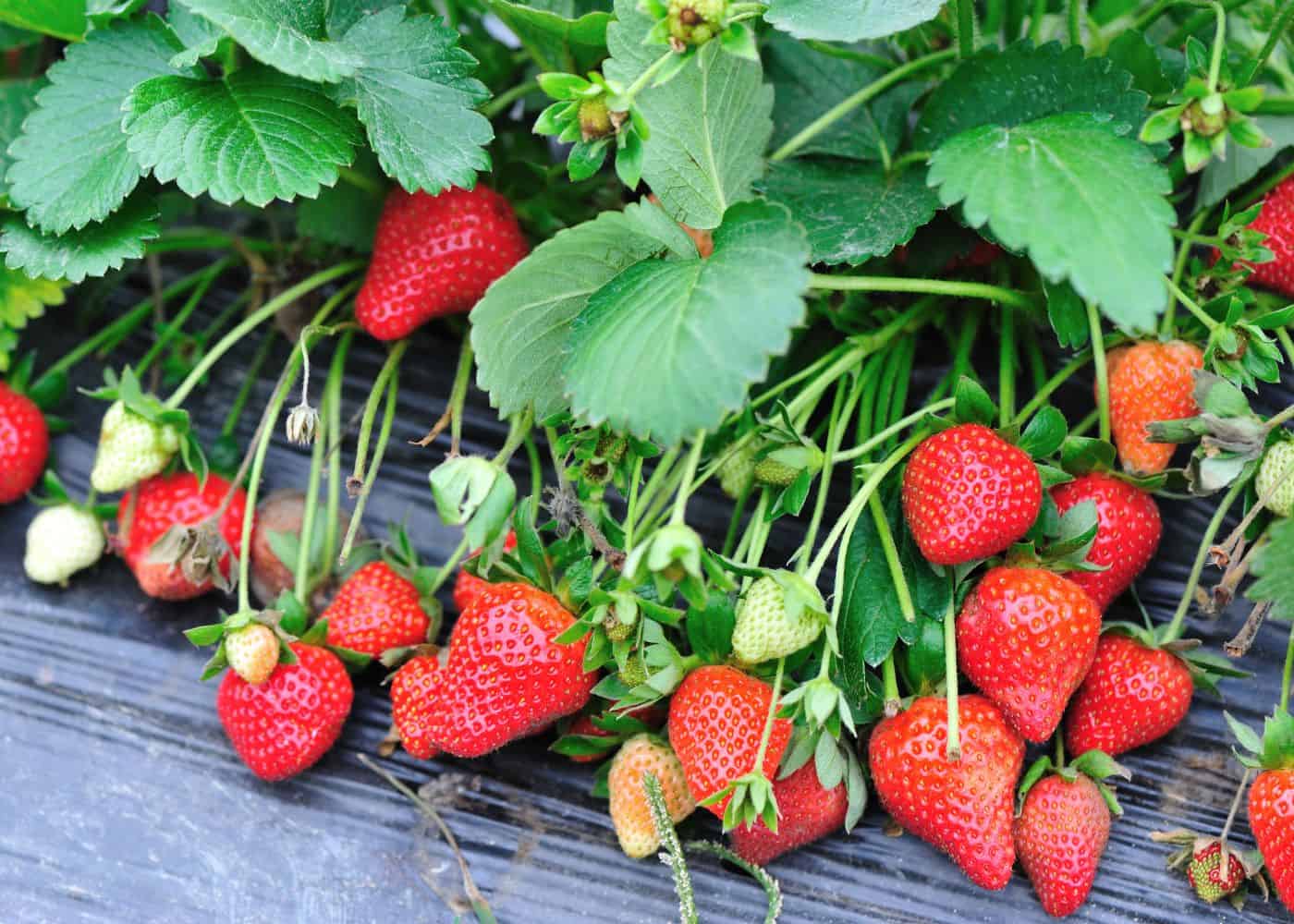
Introduction to day-neutral strawberries
Day-neutral strawberries are a category of varieties of strawberries that grow berries all through the growing season. Unlike day-length dependent types like June-bearing or everbearing, day-neutral varieties are not affected by day length and thus have a longer harvest period. This makes them the right choice if you want homegrown fruits all season long.
Many gardeners like to plant both a June-bearing variety and a day neutral variety so the harvest season starts in June with the June-bearing and then continues in July-October as the day-neutral berries ripen. The flavor of both these types tends to be sweeter and more intense than everbearing strawberries.
Day-neutral strawberries tend to be smaller in size than day-length-dependent varieties, and the taste is often described as more intense. They also tend to be more disease-resistant, and some varieties require less intensive maintenance than day-length dependent varieties. Since day-neutral strawberries can produce fruit throughout the entire growing season, they are ideal for pick-your-own operations or roadside stands.
While they are perennial plants like other types of strawberries, day-neutral strawberry plants tend to decline in productivity after a year or two. It is important to regularly rotate day-neutral strawberry plants to maintain their productivity. Market growers typically grow them as annual plants, replacing them each spring.
Additionally, day-neutral varieties are often more sensitive to weather conditions than day-length-dependent varieties and may need extra protection in colder climates. However, day-neutral strawberries are resilient and can produce fruit in various conditions.
For home gardeners looking for a variety that produces throughout the season, day-neutral strawberries are a great option. With proper care, day-neutral strawberry plants can provide delicious homegrown fruits all summer.
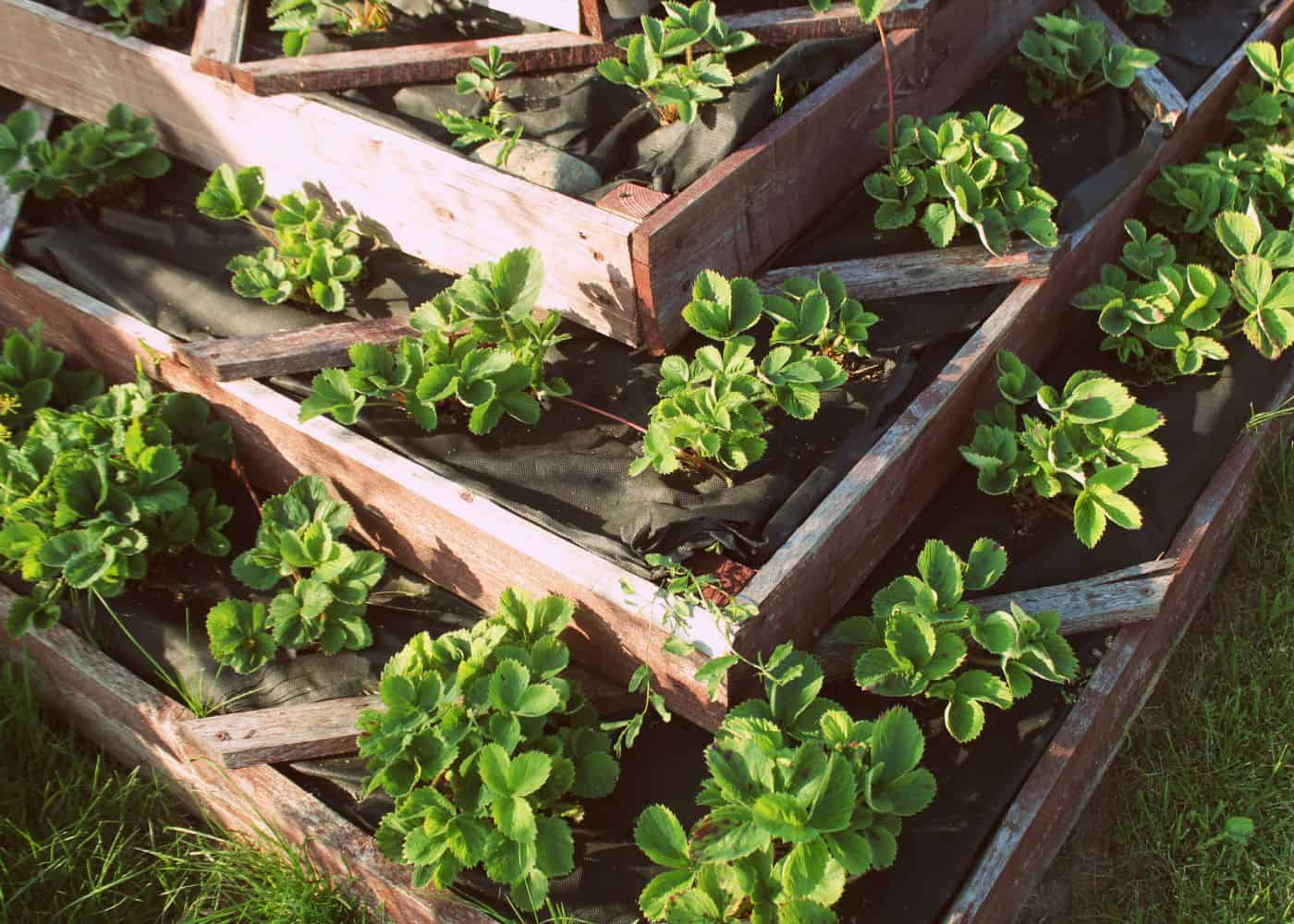
Day-neutral strawberry varieties
Here are some popular strawberry varieties that are day-neutral:
The main types of strawberries
There are three overall strawberry categories: June-bearing, everbearing, and day-neutral. Day-neutral strawberries have many similarities to everbearing strawberries, and in many ways, behave like improved everbearing varieties.
June-bearing strawberries are the top choice for gardens and farms and produce one large berry for 2-3 weeks in springtime, usually starting in June. These plants do not produce fruit at other times of the year. But the fruit they do grow is plump and delicious! They also grow many runners once they are done fruiting. June-bearing strawberries grow their flower buds in the fall as days get shorter.
Everbearing strawberries produce two crops per year: one starting in June (like June-bearing) and an additional smaller crop in late summer/early fall. They’re a great backup in climates where late spring frosts tend to kill early strawberry blossoms, potentially destroying the crop. Everbearing strawberries grow their flower buds in the summer while the days are long. The berries tend to be the least flavorful of the three kinds.
Day-neutral strawberries produce fruit on a slow and steady basis during the whole growing season based on other factors such as the age of the plant and the availability of water and nutrients. They’re not too concerned about how long the days are, as they can set flower buds as long as it’s not overly cold or too hot out. Day-neutral strawberries can produce fruit from July through October and often produce a steady supply of fruit over a longer period of time. These varieties also generally have more sweetness than traditional everbearing.
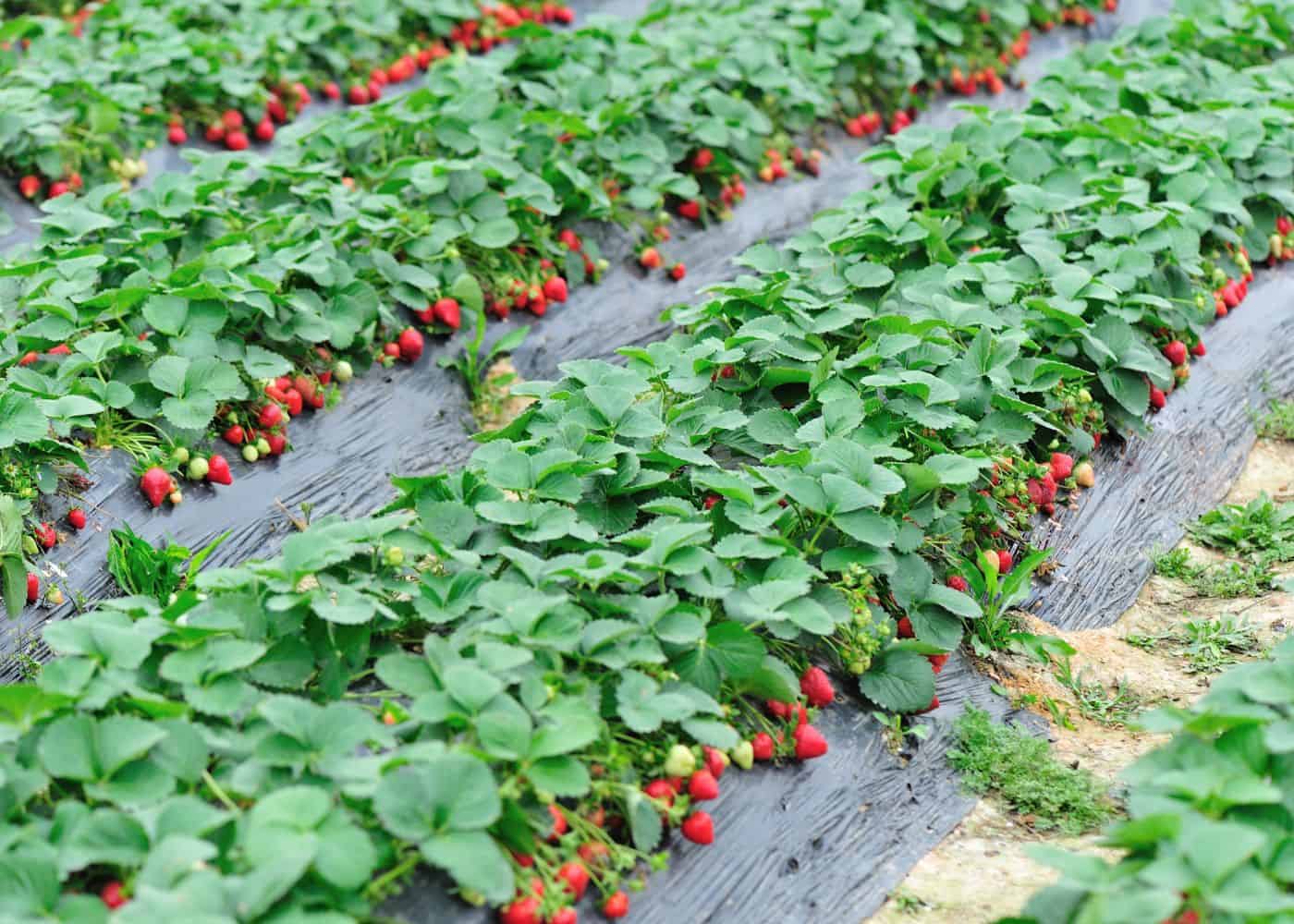
Methods for planting day-neutral strawberry plants
There are several methods for planting day-neutral strawberry plants. The most popular are the hill system and raised beds.
In the hill system method, the strawberry plants are spaced about a foot apart in rows that are spaced about 3-4 feet apart. The soil down the row is mounded and often covered with plastic to keep runners from rooting. Any runners that do form are removed, so only the mother plants are maintained. This method allows for better air circulation and can be a good choice for gardens with heavy soil or prone to disease.
Day-neutral varieties also grow very well in raised beds. In this method, the strawberry plants are planted in traditional raised beds like you would use for vegetables. The plants are spaced about 6-12 inches apart in the bed. This method allows for good drainage and can be a good choice for gardens with poor soil.
Day-neutral strawberry plants can also be grown in containers, such as pots or hanging baskets. This method can be a good choice for small gardens or for growing strawberries on a patio or balcony.
There is another popular method of planting strawberries that works well for June-bearers but not very well for day-neutral. In this method – the matted row – strawberry plants are spaced about 18 inches apart in rows that are spaced about 3-4 feet apart. The plants are allowed to spread out and form a “mat” of leaves and runners (stems that grow from the plant and produce new plants). This method is best for plants that stay productive for multiple years and that grow lots of runners (neither of which is a characteristic of day neutrals).
No matter which method you choose, it’s important to prepare the soil well by adding compost or well-rotted manure to help the plants establish roots and grow healthy foliage. Additionally, be sure to water the plants regularly and protect them from pests and diseases.
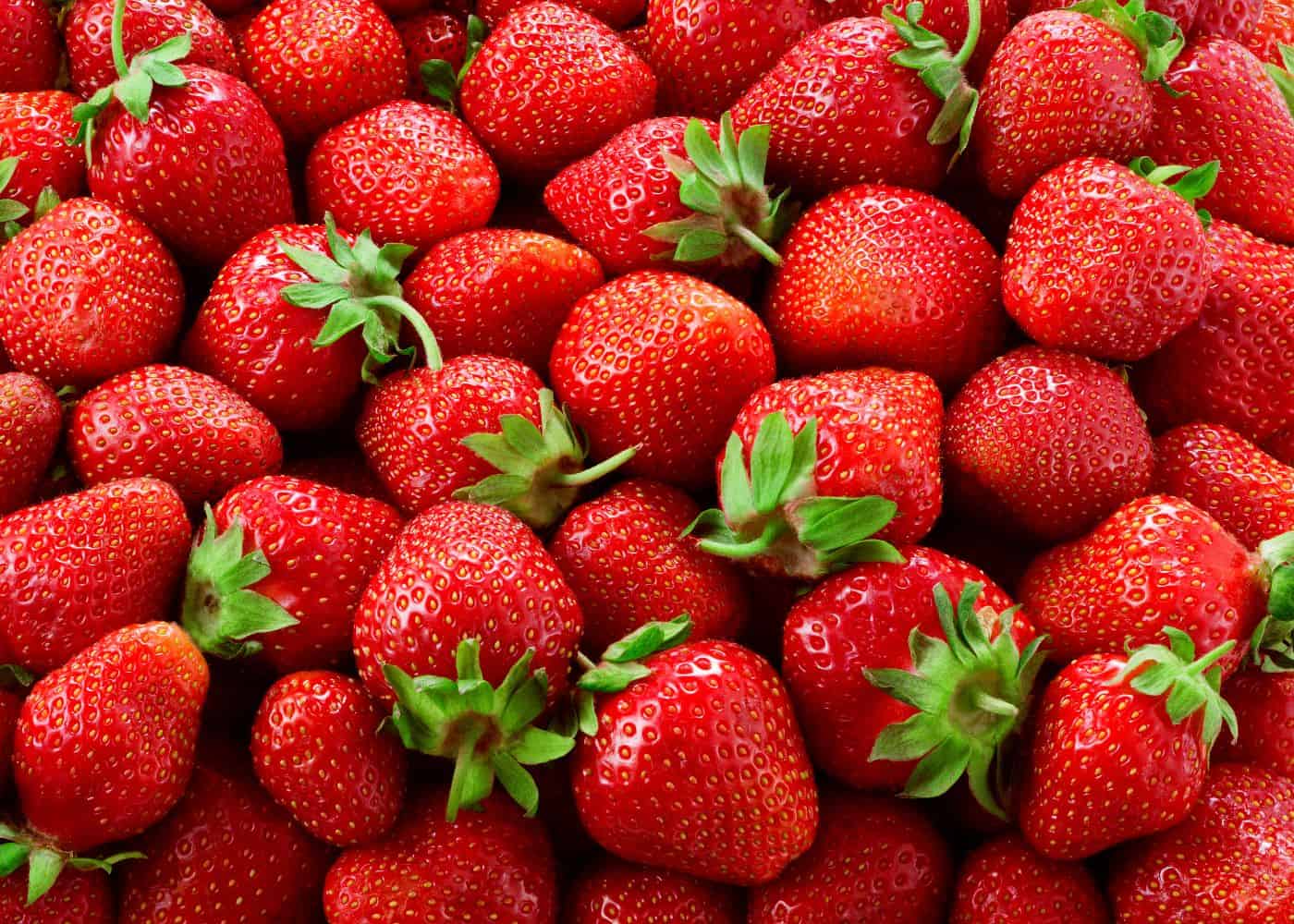
Growing day-neutral varieties as annual plants
Day-neutral strawberries are sometimes grown as annual plants because they do not typically produce as much fruit in their latter years as June-bearing or everbearing strawberries. For this reason, some growers choose to grow day-neutral strawberries as annuals and replace the plants each year to ensure a consistent and high yield. Growing strawberries as annuals also allows the grower to rotate the strawberry plants to a different location in the garden each year, which can help prevent the buildup of diseases in the soil.
It’s important to note that day-neutral strawberries can also be grown as perennial plants and will continue to produce fruit for several years if well cared for and free of disease. Day-neutral strawberries can be a good choice for home gardeners who want a steady supply of fruit over a longer period of time and are willing to devote the time and effort needed to care for the plants.
FAQs about day-neutral strawberries
What are day-neutral strawberries?
Day-neutral strawberries are a type of strawberry plant that produces fruit throughout the growing season, rather than having a specific harvest time. These plants are called “day neutral” because their fruiting is not affected by the length of daylight hours in the same way that many other strawberry plants are.
How do day-neutral strawberries compare to June-bearing and everbearing strawberries?
Compared to June-bearing strawberries, day-neutrals produce later and longer. But both June-bearers and day-neutral varieties tend to have excellent flavor. Some gardeners grow both so you get the June-bearers in June and the day-neutrals in July-October.
Compared to everbearing strawberries, day-neutrals are generally superior. Most day-neutrals are essentially improved everbearers, with higher productivity, a longer harvest season, and better flavor.
Can day neutral strawberries be grown as perennial plants?
Yes, day neutral strawberries are perennial plants and will continue to produce fruit for several years if well cared for. They can be a good choice for home gardeners who want a steady supply of fruit over a longer period of time and are willing to maintain the patch to keep it free from weeds and disease. However, many larger growers choose to grow day neutral strawberries as annuals and replace the plants each year to ensure a consistent and high yield.


